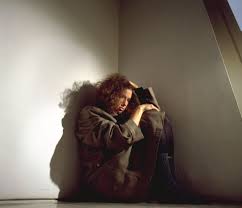What are Dysthymia and Cyclothymia?
Dysthymia and cyclothymia are two types of mental disorder that are similar to other, more severe disorders. Working to understand and recognize these conditions is important, as they can sometimes go undetected compared to other disorders.
What is Dysthymia?
According to the NLM, “Dysthymia is a chronic type of depression in which a person’s moods are regularly low.” A chronic condition is one that is not easily changed and can affect a person for a long while. While dysthymia is similar to major depression, its “symptoms are not as severe.” This is why dysthymia is not in the public eye as commonly as disorders like major depression.
Dysthymia can be very difficult for the person who has the disorder and also for friends and family members of the afflicted person. While the “exact cause of dysthymia is unknown,” it does “run in families.”
Dysthymia tends to occur in women more often than men and often in the elderly. Many people who suffer from dysthymia are known to have “long-term medical problems” like:
- Alcohol abuse
- Anxiety
- Drug addiction
- An episode of major depression at some point during their lives
What are the Symptoms of Dysthymia?

A person with dysthymia will feel depressed almost all of the time.
Some of the symptoms of dysthymia are:
- A “low, dark, or sad mood on most days for at least 2 years”
- Too little/too much sleep
- “Feelings of hopelessness
- Fatigue
- Low self-esteem
- Difficulty concentrating
- Issues with appetite (often overeating)
Children and adolescents could be suffering from dysthymia if their moods are more irritable than depressed, and it only needs to last for 1 year. Medications and therapy can be used to treat those suffering from dysthymia, and these are suggested, as well as exercising regularly, following a healthy diet, and “looking for activities that make you happy.”
What is Cyclothymia?
The NLM states, “Cyclothymic disorder is a mild form of bipolar disorder (manic depressive illness) in which a person has mood swings over a period of years that go from mild depression to emotional highs.” Although cyclothymia is similar to bipolar disorder, it is much milder and therefore, does not receive as much attention as the former.
“Cyclothymia usually begins early in life.” Although it is common in both men and women, the cause is not known. Like dysthymia, it does tend to run in families. Many people do not seek treatment, as the issue can be mild and people sometimes write their moods off, but you should seek treatment if your cyclothymia is causing problems for you in your daily life.
What are the Symptoms of Cyclothymia?
The symptoms of cyclothymia are:
- “Episodes of hypomania… and mild depression occur for at least 2 years or 1 in children and adolescents”
- Mood swings are not as severe as those cased by depression and bipolar disorder
- Symptoms must be persistent
Cyclothymia may “continue as a chronic condition or disappear with time.” Only less than half of the people who have cyclothymic disorder will actually develop bipolar disorder.
Cyclothymia and dysthymia are prevalent disorders of which people should be aware. While they are not always as devastating as bipolar disorder and major depression, they can cause problems in a person’s life, sometimes making treatment necessary.





